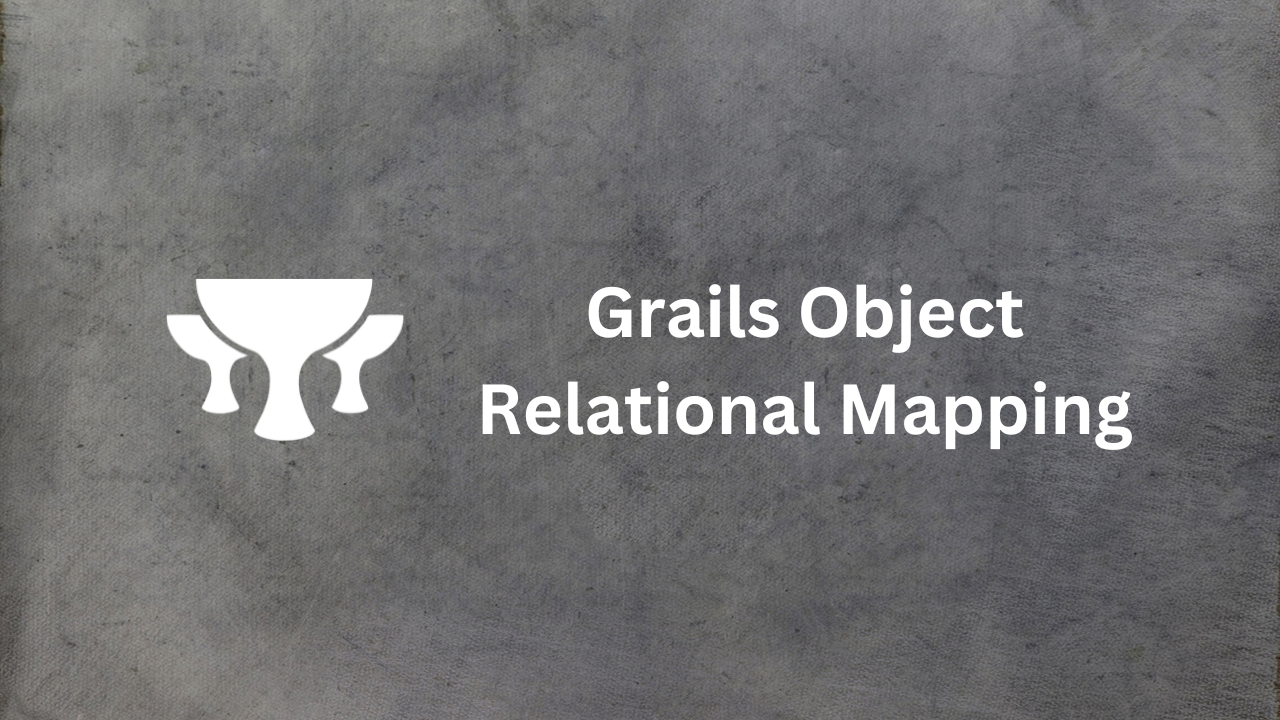“Learn about Grails Object Relational Mapping (GORM) and how it simplifies database interactions in Grails applications. Discover its features, benefits, and how to use it effectively for seamless database integration.”
Object Relational Mapping (ORM) simplifies database interactions by abstracting away the complexities of SQL queries and allowing developers to work with database entities in an object-oriented way. In the Grails framework, Grails Object Relational Mapping (GORM) serves as the ORM layer, providing a seamless integration with databases using Groovy’s dynamic and expressive syntax.
In this blog, we’ll explore the fundamentals of GORM, how to define domain classes, establish relationships, and effectively manage your database interactions in a Grails application.
Table of Contents
What is GORM?
GORM is the default ORM implementation in Grails, built on Hibernate, the well-known Java ORM framework. It extends Hibernate’s capabilities with Groovy’s dynamic language features, providing developers with an intuitive API for managing database operations.
Why Use GORM?
- Ease of Use: GORM eliminates boilerplate code for database operations.
- Dynamic Finders: Allows querying data using method names like
findByNameAndStatus. - Convention Over Configuration: Reduces the need for explicit configurations by adhering to conventions.
- Supports Multiple Databases: Works seamlessly with relational databases (like MySQL, PostgreSQL) and NoSQL databases (like MongoDB).
Defining Domain Classes
Domain classes are the backbone of GORM. They represent the data model and are mapped to database tables automatically. Grails uses conventions to infer the database schema, making it easy to get started.
Creating a Domain Class
To define a domain class, you can use the following CLI command:
grails create-domain-class com.example.Book
This generates a Book.groovy file under the grails-app/domain/com/example directory. A sample domain class might look like this:
package com.example
class Book {
String title
String author
Integer pages
Date publishedDate
Double price
}
Key Points in Domain Classes
- Properties: The fields in the class (
title,author, etc.) represent the columns in the database table. - Default Conventions: The class name is used as the table name (
Bookmaps tobook), and property names become column names. - Automatic Timestamps: Grails automatically manages
dateCreatedandlastUpdatedfields if added.
Date dateCreated
Date lastUpdated
Database Mappings in GORM
GORM allows customization of the mapping between domain classes and the database schema using the mapping block.
Customizing Table and Column Names
class Book {
String title
String author
static mapping = {
table 'library_books'
title column: 'book_title'
author column: 'book_author'
}
}
Adding Constraints
Constraints are used to validate data before it is persisted to the database.
class Book {
String title
String author
static constraints = {
title nullable: false, blank: false, maxSize: 100
author nullable: true
}
}
nullable: Determines if the field can benull.blank: Ensures the field is not an empty string.maxSize: Limits the maximum length of the field.
Relationships in GORM
GORM supports relationships such as one-to-one, one-to-many, and many-to-many, allowing developers to define complex models easily.
One-to-Many Relationship
For example, a Author can write many Books:
class Author {
String name
static hasMany = [books: Book]
}
class Book {
String title
static belongsTo = [author: Author]
}
Here:
hasManyinAuthorindicates that one author can have multiple books.belongsToinBookestablishes the ownership of the relationship.
One-to-One Relationship
A one-to-one relationship can be defined like this:
class Book {
String title
static hasOne = [publisher: Publisher]
}
class Publisher {
String name
}
Many-to-Many Relationship
For a many-to-many relationship, use the hasMany property on both sides:
class Author {
String name
static hasMany = [books: Book]
static mappedBy = [books: 'authors']
}
class Book {
String title
static hasMany = [authors: Author]
static mappedBy = [authors: 'books']
}
Querying Data in GORM
Dynamic Finders
GORM provides dynamic finder methods, making it easy to query data without writing SQL.
def book = Book.findByTitle("Groovy in Action")
def books = Book.findAllByAuthor("John Doe")
Criteria Queries
Criteria queries provide more flexibility for complex queries:
def books = Book.createCriteria().list {
eq('author', 'John Doe')
ge('price', 20.0)
}
HQL (Hibernate Query Language)
GORM supports HQL for advanced queries:
def books = Book.executeQuery("from Book where author = :author", [author: 'John Doe'])
Database Transactions
By default, GORM methods like save(), delete(), and update() are transactional. You can also manage transactions explicitly:
Book.withTransaction {
def book = new Book(title: "Groovy Fundamentals", author: "Jane Doe")
book.save()
}
GORM for NoSQL Databases
GORM extends its ORM capabilities to NoSQL databases like MongoDB. Configuration for MongoDB can be added to application.yml:
grails:
mongodb:
host: localhost
port: 27017
databaseName: myDatabase
With MongoDB, GORM still works seamlessly for domain classes, queries, and relationships.
Advantages of Using GORM
- Productivity: Automates repetitive database operations.
- Flexibility: Works with relational and NoSQL databases.
- Dynamic Queries: Reduces the need for boilerplate SQL.
- Seamless Integration: Built-in support for Grails features like validation and transactions.
Conclusion
GORM simplifies data persistence in Grails applications, offering a powerful yet intuitive way to manage database interactions. By leveraging Groovy’s dynamic capabilities, GORM reduces the complexity of traditional ORM solutions while providing rich features like dynamic finders, relationships, and support for both relational and NoSQL databases.
Whether you’re building a simple CRUD app or a complex enterprise application, GORM gives you the tools to work with your data efficiently. Start exploring GORM today and unlock the potential of seamless database integration in Grails!

